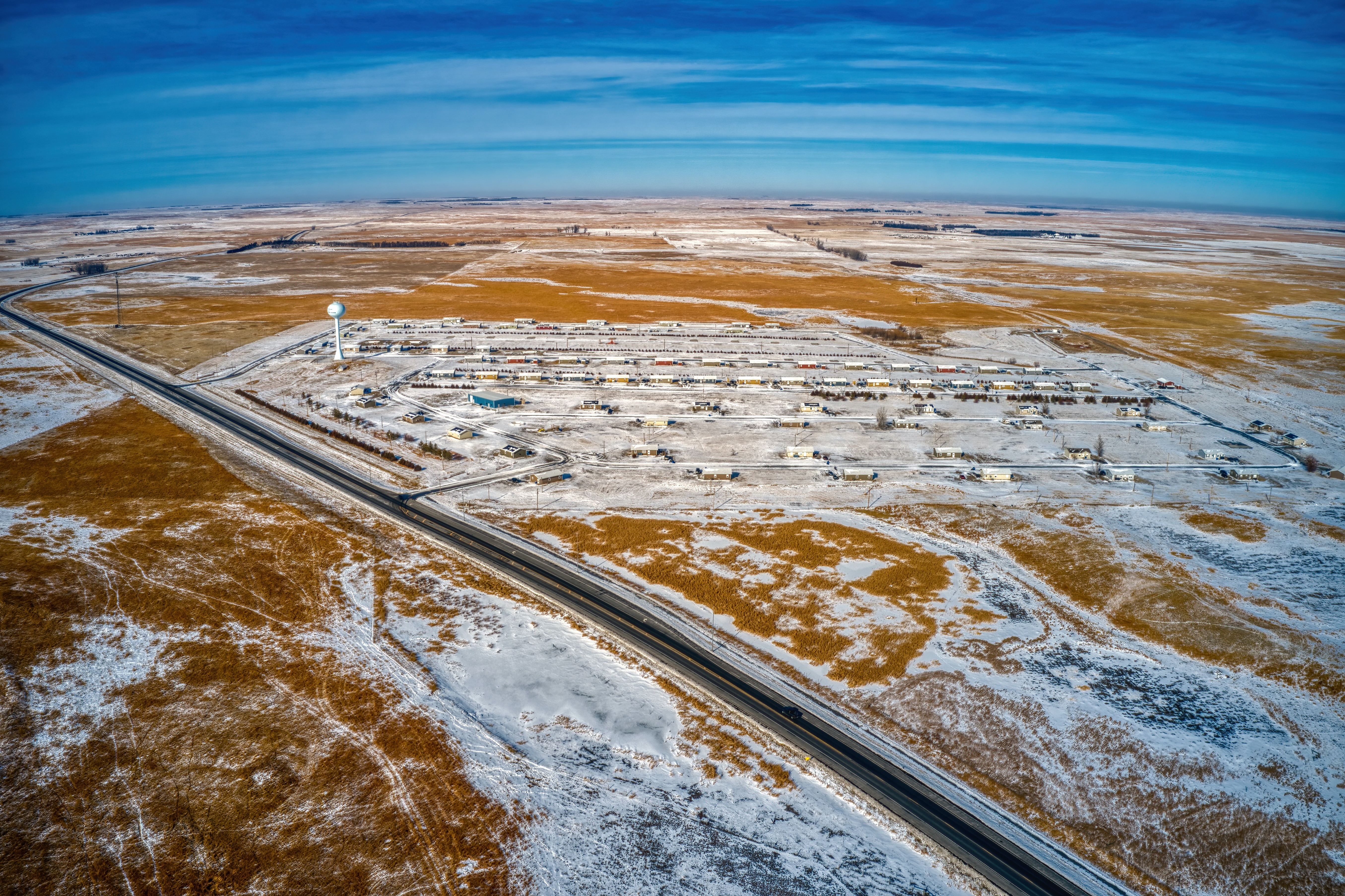Official US Records Underestimate Native Americans Deaths and Life Expectancy.

Pictured is an aerial view of the Rosebud Sioux Native American Reservation in South Dakota.
Official US Records Underestimate Native Americans Deaths and Life Expectancy
A new study in JAMA reveals the “statistical erasure” of Indigenous Americans, finding that the gap between AI/AN life expectancy and the national average was 2.9 times greater than official vital statistics indicate.
Death rates for American Indians’ and Alaska Natives (AI/AN) are far higher than reported in official vital statistics, according to a new study led by a School of Public Health researcher.
Published in JAMA, the nationally representative study found that death certificates for at least 41 percent of AI/AN decedents failed to identify them as AI/AN, in most cases misreporting their race as “White.”
As a result of these death certificate errors, official vital statistics greatly underestimate AI/AN mortality, overestimate AI/AN life expectancy, and understate the mortality disparities between AI/AN and other Americans.
The study showed that the actual gap in life expectancy between AI/AN and the national average was 6.5 years—2.9 times larger than the number reported in unadjusted official statistics. This life expectancy gap nearly doubled during the study period, increasing from 4.1 years between 2008-2010 to 8 years between 2017-2019. Over the whole 11-year study period, AI/AN life expectancy averaged only 72.7 years, similar to the life expectancy in El Salvador and Bangladesh.
Compared to other Americans, AI/AN mortality was particularly high for young and middle-aged adults and was higher than the national average for AI/AN people living on and off reservations. Even AI/AN individuals with a college education died far younger than their non-AI/AN counterparts. Deaths from heart disease (16 percent), cancer (11 percent), and diabetes (10 percent) accounted for the largest shares of the overall mortality gap between AI/AN and other Americans.
The analysis is the first contemporary study to prospectively assess mortality among self-identified AI/AN people in a nationally representative study. The study linked records from the 2008 American Community Survey with mortality data from US vital statistics, enabling calculation of mortality rates and life expectancy that were not biased by underreporting of AI/AN race on death certificates.
“Since European contact, indigenous people in today’s United States have survived attempts at physical and cultural erasure that have contributed to present-day health inequities,” says study lead author Jacob Bor, associate professor of global health and epidemiology at BUSPH. “Tragically, their ‘statistical erasure’ in routine public health data has obscured the severity of today’s mortality crisis among AI/AN. Our findings underscore the need for increased investment in the health of AI/AN people and accurate public health data to understand and address these health inequities.”
For the study, Bor and colleagues from SPH, the Kewa Pueblo tribe in New Mexico, the University of California, Berkeley, CUNY’s Hunter College, Harvard Medical School, the US Census Bureau, and the University of California, Los Angeles, analyzed mortality and race/ethnicity data among 4,135,000 respondents to the 2008 American Community Survey (ACS), including 30,500 who self-identified as non-Hispanic AI/AN only, and 58,000 who self-identified as AI/AN only or in combination with another race.
The ACS, a nationally-representative survey conducted by the Census Bureau, was linked to death certificates through 2019 using Social Security numbers, which enabled the researchers to estimate mortality rates for self-identified AI/AN and mortality disparities relative to other Americans. The MDAC data also enabled the researchers to compare decedents’ self-identified race and ethnicity in the ACS with the race and ethnicity recorded on their official death certificate, which is usually filled out by a funeral director.
Based on the MDAC data, the mortality rate for AI/AN individuals was 42 percent higher than the national average. By contrast, in official vital statistics, the AI/AN mortality rate was only five percent higher than the national average.
Although AI/AN groups vary, the researchers say, most of the population shares common histories of presence in the Americas prior to European settlement and subsequent removal from their lands during the European colonization of the Americas—displacement that resulted in disease and warfare that killed an estimated 95 percent of the indigenous population in what is now the US. Shared histories also encompass forced assimilation, economic marginalization, and complex arrangements of political sovereignty, they write. This historical trauma now contributes to high current-day rates of psychological distress, substance use, chronic illnesses, and injuries, all of which lead to shorter life expectancy.
“The history of genocide against Indian people is generally minimized, even today,” says study coauthor Michael Bird, past president of the American Public Health Association and a member of the Kewa Pueblo. “Genocidal policies—including the intentional introduction of infectious diseases and wars waged on Indians on their own land—sought to eliminate anything Indigenous. Millions of us perished with no record. So the yawning gaps in data on Indian peoples’ lives and deaths come as no surprise.
“This study supports what Indian people have always known: We are still here, yet invisible.”
The researchers say their findings emphasize the need for continued investment in measuring AI/AN health accurately, including collaboration with AI/AN tribes on linking mortality data of national samples, updating misclassification ratios to correct routine vital statistics, and training funeral directors to collect accurate race and ethnicity data from next of kin.